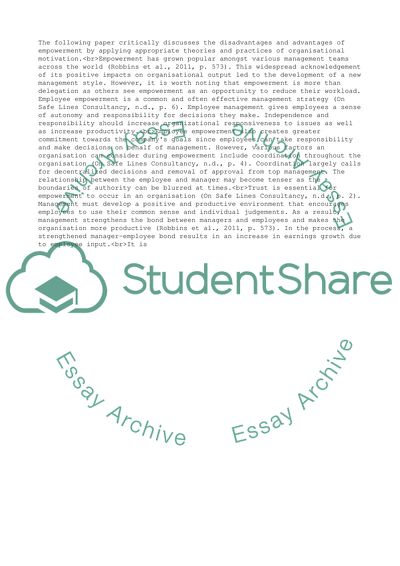Cite this document
(“Empowerment is an unrealistic concept. Discuss Essay”, n.d.)
Empowerment is an unrealistic concept. Discuss Essay. Retrieved from https://studentshare.org/management/1672700-empowerment-is-an-unrealistic-concept-discuss
Empowerment is an unrealistic concept. Discuss Essay. Retrieved from https://studentshare.org/management/1672700-empowerment-is-an-unrealistic-concept-discuss
(Empowerment Is an Unrealistic Concept. Discuss Essay)
Empowerment Is an Unrealistic Concept. Discuss Essay. https://studentshare.org/management/1672700-empowerment-is-an-unrealistic-concept-discuss.
Empowerment Is an Unrealistic Concept. Discuss Essay. https://studentshare.org/management/1672700-empowerment-is-an-unrealistic-concept-discuss.
“Empowerment Is an Unrealistic Concept. Discuss Essay”, n.d. https://studentshare.org/management/1672700-empowerment-is-an-unrealistic-concept-discuss.


